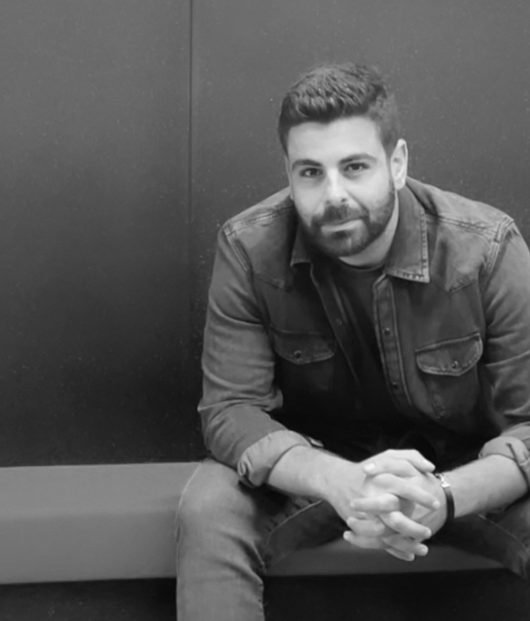Four Ways That Brands Can Sharpen Their Competitive Edge In 2023
By Rasha El Ghoussaini, Head of Industry – Travel, Luxury and Tech at Snap Inc.

Over the last several months, I’ve been collaborating with brands across MENA to explore new opportunities in 2023 to grow their audience, build their business, and entertain their communities using the power of augmented reality (AR). These conversations happen in the context of broader insights into changing consumer behaviors. They also consider local economic headwinds, new entrants into the market, emerging technology applications, and much more.
What is clear to me is that there is no one-size-fits-all formula for success—on Snapchat or on any other platform. The relationship between creativity, technology, and data is evolving far too fast for a single static approach. That being said, there are four considerations that nearly all brands seem to be prioritizing at the start of the year, which I believe can help them to sharpen their competitive edge.
Doubling down on ROI measurement: Economic pressures are pushing brands to be even more focused on delivering results in the year ahead. The performance marketing landscape also keeps evolving to maximize user privacy. As such, we will start seeing brands focus on measurement solutions beyond pixels and MMPs, but rather the return they are achieving across the full marketing funnel, from brand lift to online and offline conversions. The measurement ecosystem in MENA is still relatively underdeveloped compared to other mature markets. In the short run, brands, media, and measurement partners will retain a handful of measurement methodologies as more advanced ones get formulated and tested in 2023. In the meantime, we will start seeing a higher adoption of conversion APIs, market mix models, cross media studies, and conversion lift studies. We’ve seen early movers such as Sephora and Cartier already running cross media and conversion lift studies to better assess the impact of their media mix, identifying new synergies and potential for each medium along their marketing funnel.
Catching up to AR’s shopping potential: Recent surveys have shown that more than 90% of brands think that augmented reality (AR) is primarily for fun. Yet 70% of consumers identify shopping as their main reason for using AR[1]. Dior used catalog-powered lenses to drive personalization and performance through try-on AR, registering more than 4.4M trials. This is a concrete example of immersive media and product appeal working hand-in-hand to create a strong affinity with consumers. However, the disconnect between brand perceptions and consumer reality remains deep going into 2023. I believe this is the year that we will start seeing a closing of this gap as more and more brands start integrating AR into their media plans. It is estimated that by 2025, 75% of people across the globe and nearly everyone with a smartphone will be frequent AR users. Closer to home, almost all of the Gen Z and Millennial population in Saudi Arabia, and 65% of the UAE’s population, will be frequent AR users by 2025[2].
Clearly there is a growing demand for AR in our day-to-day lives and an unmet commerce opportunity for brands.
Tapping the discretionary spending of Gen Z: Young people under the age of 30 constitute more than half (55%) of the population across MENA[3]. While those referred to as Gen Z might not necessarily drive immediate sales across high-end categories like luxury goods and automotive, this generation will be critical to the future success of brands as they will be the purchasers and loyalists of tomorrow. Even today they hold incredible influence on household purchasing decisions, as well as wielding their own purchasing power. We see this in our own data, which shows discretionary spending power for the Snapchat Generation reaching a whopping $425 billion in MENA. More specifically, 1.4 Trillion Saudi Riyal in Saudi Arabia and 216 Billion AED in UAE[4]. Based on conversations across the board, it appears that brands will do much more to focus on building brand love amongst Gen Z in 2023.
‘Un-stereotyping’ traditional consumer profiles: It is not uncommon for social and cultural norms to evolve over time. In MENA, this is being accelerated by economic diversification drivers, a rise in tourism, booming foreign direct investment and much more. As a result, I think we will see more brands reconsider their targeting strategies, especially when it comes to gender profiles. Addressing gender stereotypes in fields like automotive and financial services is vital for companies to expand their customer base, especially as women become more involved in the job market and flourish within the SMB scene. If we think about the automotive industry, for instance, traditional advertising has been targeted toward men. Yet a recent experiment done by Volkswagen uncovered that women influence 85% of car buying decisions[5]. Similarly in the financial services domain, Visa is supporting women entrepreneurs by launching the “She’s Next” campaign to help empower female SMB owners, as survey results in the UAE found that 86% of women entrepreneurs find it challenging to receive funding.
There is no doubt that 2023 will prove to be challenging for businesses across all verticals, but with every great challenge comes opportunity. And those that realign the wheel, are the ones that will come out on top.





